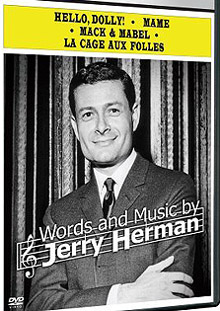
One of my favorite people in the world, Carol Burnett, turns 73 today.
I think one of the reasons I love theater so much was that growing up, my favorite show was “The Carol Burnett Show.” From as early as I can remember, Saturday nights were my haven because of two women: Mary Tyler Moore and Carol Burnett. Mary (via Mary Richards on “The Mary Tyler Moore Show”) showed me the kind of grown-up life I wanted to have (and did sort of end up having). And Carol, along with her crew that included Harvey Korman, Tim Conway and Vicki Lawrence, showed me the joys of music and comedy and, blessed be, musical comedy. “The Carol Burnett Show” was like a new Broadway show every week with the sketches, the singing, the dancing, the groovy ’70s sets and the wild Bob Mackie costumes. Oh, and the guest stars — hard to complain with a heaping helping of Steve and Eydie, Jim Nabors, Alan Alda, Ken Berry and the like. God, how I miss variety shows!
I got to see Carol live on stage in 1999 when she was in the Stephen Sondheim revue Putting It Together alongside George Hearn, Ruthie Henshall, John Barrowman and Bronson Pinchot. Wish I could have seen her in her Broadway debut in 1959’s Once Upon a Mattress. The cast album from that show has long been a favorite (as have Carol’s solo albums — not exactly chart-toppers but charming). She’s such a pro. I hope I get to see her perform again. And I really hope I get to sit down and interview her (came close with the made-for-TV Mattress with Burnett and another of my favorites, Tracey Ullman).
A Web site called Complete Series TV offers the complete DVD set of “The Carol Burnett Show,” which was originally sold through Columbia House. It’s two complete episodes per disc (12 discs), which is not the complete series by any means, but it’s the best we can do for now, and it’s a whole lot better than those truncated, 30-minute versions that went into syndication in the ’80s (hey, they were better than nothing, but I sure missed the lavish production numbers and the cheesy musical guest spots).

I’m still completely fascinated by the “Family” sketches (which later evolved into the mostly lame “Mama’s Family” TV series). Burnett played Eunice Higgins, a shrill harpie desperate to leave her small town existence for the bright lights of Hollywood fame. Korman was Eunice’s hardware store-owning husband, Ed. Lawrence played mama Thelma Harper (the crankiest beer-swilling matriarch of all time), and various guest stars played Eunice’s sister (Betty White) and brothers (Alan Alda, Roddy McDowell, etc.). After Burnett stopped doing her show in 1978, she appeared in a three-act made-for-TV play called “Eunice,” which I remember being extraordinary when I saw it as a kid. Many years later, I watched it again at the Museum of TV and Radio in New York, and it was every bit as good as I remembered it, and there I sat in my viewing booth, bawling my eyes out in the third act (after Mama’s death and Ed leaves Eunice). If there’s anyone out there who knows how I can get my hands on a copy of “Eunice,” please let me know! (P.S. — Theater Dog Michael wrote in to say he watched “Eunice” in its entirety on YouTube in 9 parts!). Also, due credit should be given to writers Dick Clair and Jenna McMahon (and co-director Harvey Korman!).
In tribute to Carol Burnett, here’s one of my favorite clips from “The Carol Burnett Show.” It’s one of the “Family” sketches, and Tim Conway is on a roll telling elephant stories. Burnett, Lawrence and guest star Dick Van Dyke are in hysterics.
Here’s another one with Lawrence on a tear as Mama:
And finally, here’s Burnett singing the goodbye song:

 Saw a fantastic documentary last night that I highly recommend: Word and Music by Jerry Herman. It was on PBS for about a second, but it’s available via
Saw a fantastic documentary last night that I highly recommend: Word and Music by Jerry Herman. It was on PBS for about a second, but it’s available via 
